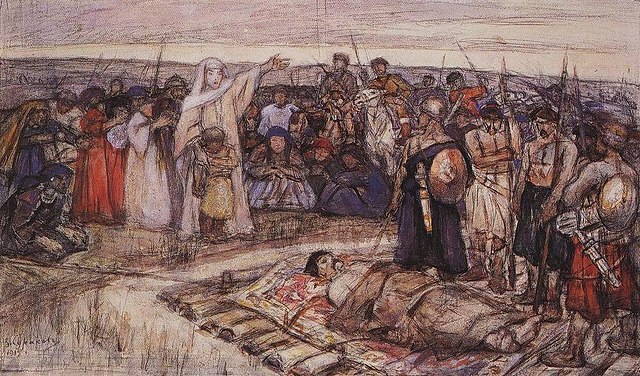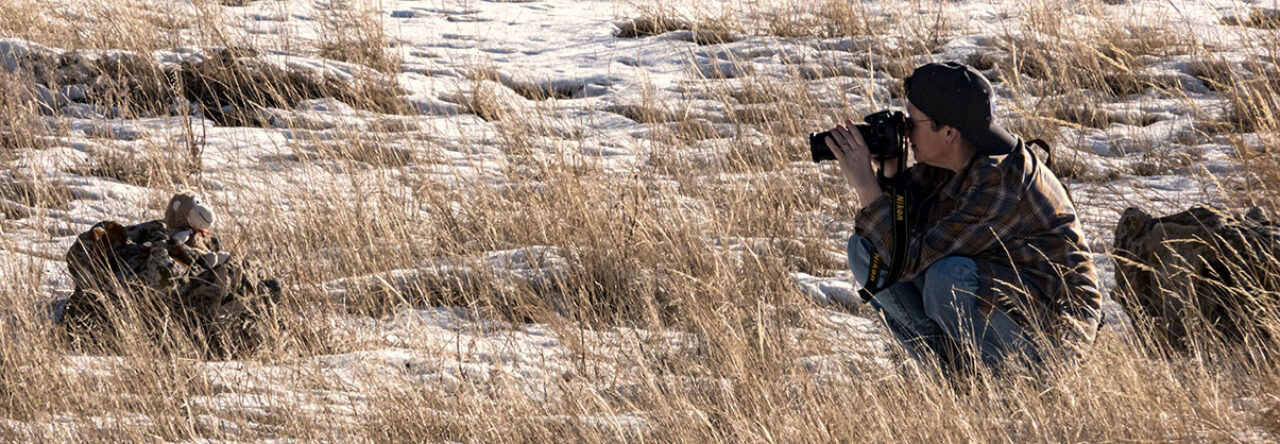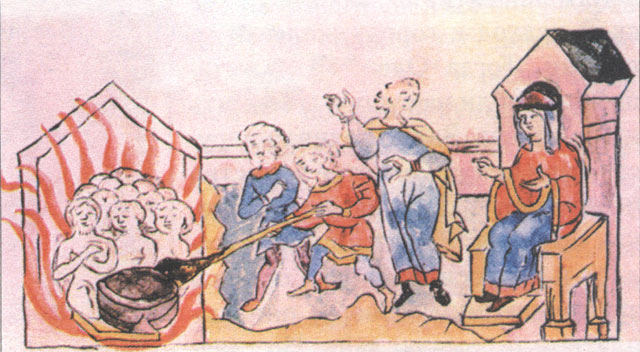
Romanov Imperial icon created in 1895 of St. Olga. Silver, gold, color enamel, tempera. Collection V.Logvinenko
Sometime around 903 CE, Olga married Prince Igor. In an ideal world they would have lived happily ever after.
After Igor took power, the Drevlian tribe decided to stop paying tribute to Igor despite having paid the tribute to his tribe in the past. Igor traveled to the Drevlians with a large contingent of men and was paid. After Igor left, he decided it wasn’t enough money, so he returned with a smaller contingent for more money.
The Drevlians were angry. According to Leo the Deacon, a Byzantine chronicler, Igor was tied to tree trunks and torn in two.
Upon Igor’s death, Olga took over as regent on behalf of their son Svyatoslav. The Drevlians encouraged Olga to marry Prince Mal, the man responsible for Igor’s death. Olga said, okay, that sounds great. She told them to she would have them brought into her court the next day for a formal announcement in their boat.
The next day, the Drevlians returned with their boat and sat inside waiting. They were carried to a trench Olga had built overnight and dumped in. They were buried alive. At some point, Olga bent down to watch them being buried and, “inquired whether they found honor to their taste.”
Next, Olga invited the Drevlians to send more envoys to escort her new prince to her. They were still unaware of what happened to the first envoy. The envoy was told they must bathe before Olga would see them. As they were enjoying their bath, Olga had the bathhouse locked and burned to the ground.
Not being finished, Olga wrote to the Drevlians to request a funeral feast where her husband was killed. She and a small group mourned at the spot and had large feast. The Drevlians drank too much and while they were passed out, Olga’s group slaughtered 5,000 of them. Then, she went home.
She was still not satisfied. She raised an army in Kiev and marched back to the Drevlians. They managed to hold her off for a year. Eventually, all the Drevlian cities except Iskorosten surrendered. They were afraid of what she would do to them.
Olga eventually said she would accept a tribute of three pigeons and three sparrows from each house. The Drevlians agreed, thinking it was a way to end the ongoing conflict.
Olga did not forgive so easily. She ordered her army to attach a piece of sulfur and pieces of cloth to the birds’ feet. That night, the army lit the sulfur and let the birds go. The birds flew back to their home. Soon, every home in the city was on fire.
Her army captured them, killed others, and took some as slaves. She took tribute from anyone she allowed to live. She was no longer upset about what happened to her husband.
Olga went on to change the system of tributes, which is considered the first legal reform recorded in eastern Europe. She defended her city during the Siege of Kiev in 968 CE and refused to remarry. She established trading posts, hunting grounds, boundary posts for the kingdom, and towns. The trading posts and hunting reserves still exist today.
She later converted to Christianity, influencing its spread in eastern Europe and Russia. She is a saint in the Orthodox tradition.
Olga died on July, 11 969, CE. Her tomb remained in Kiev for two centuries until it was destroyed by the Mongolian-Tatar armies of Batu Khan in 1240.
Today, historians focus on her contributions to spreading Christianity in eastern Europe. I like the story about a woman who knew how to kick ass.


Leave a Reply